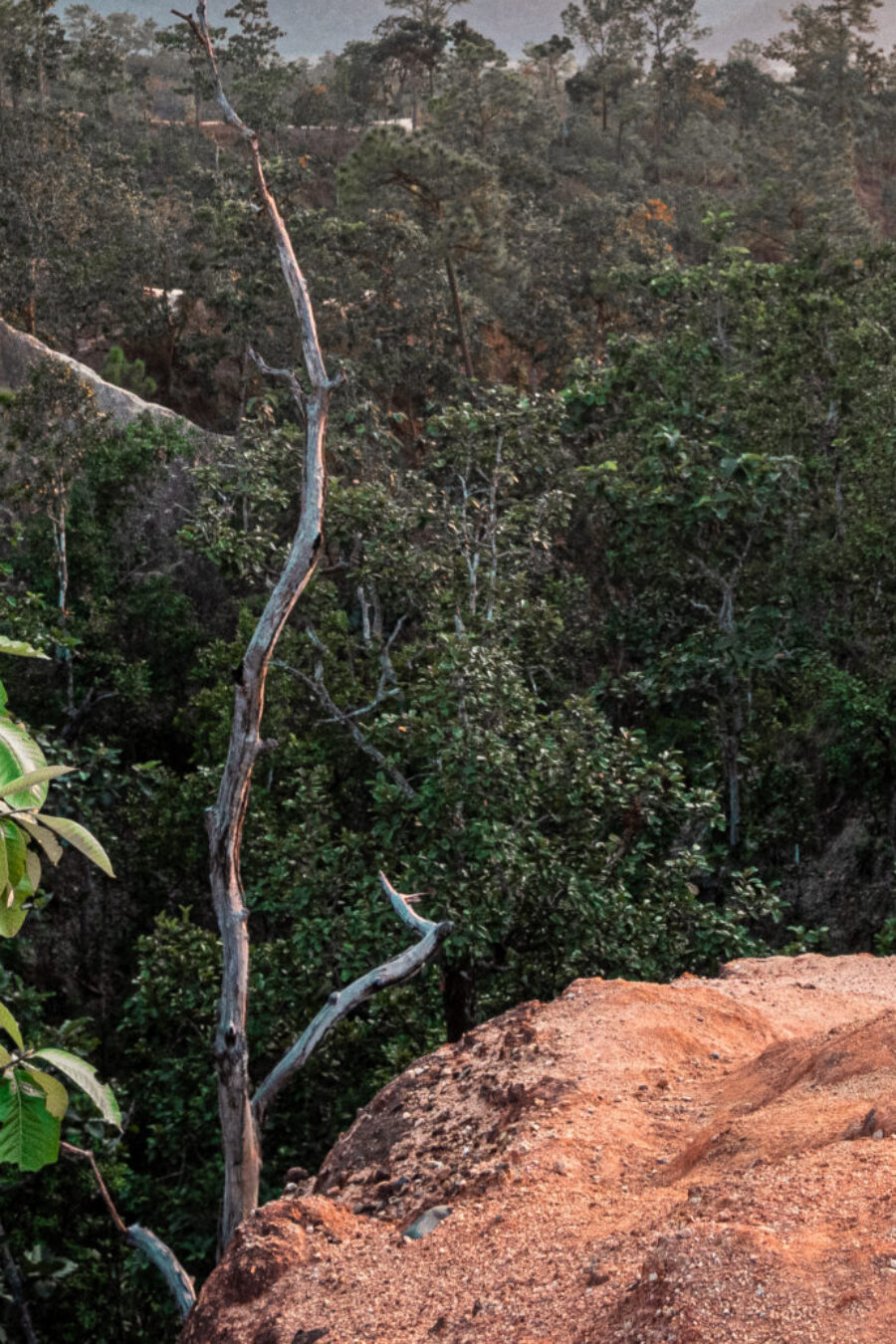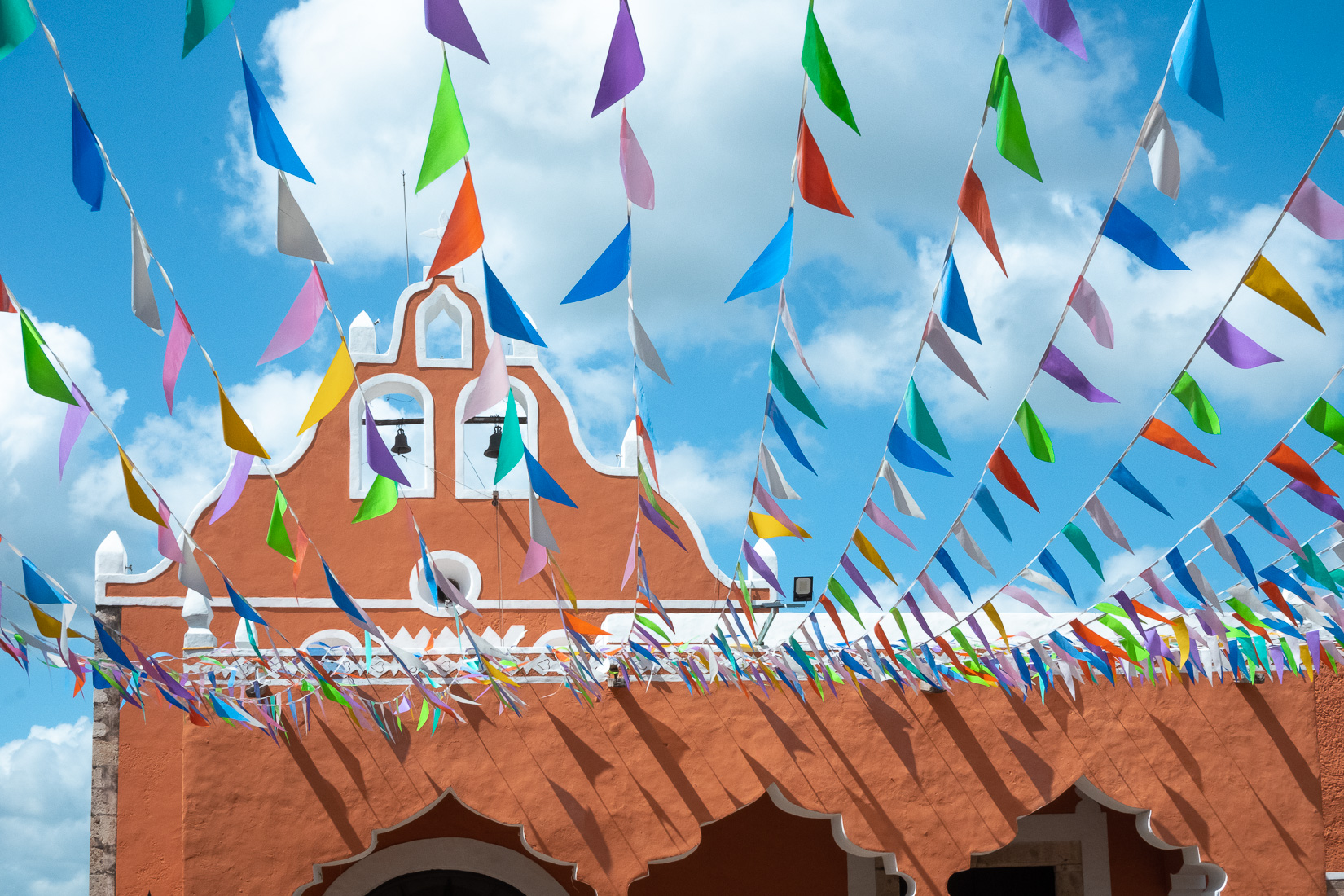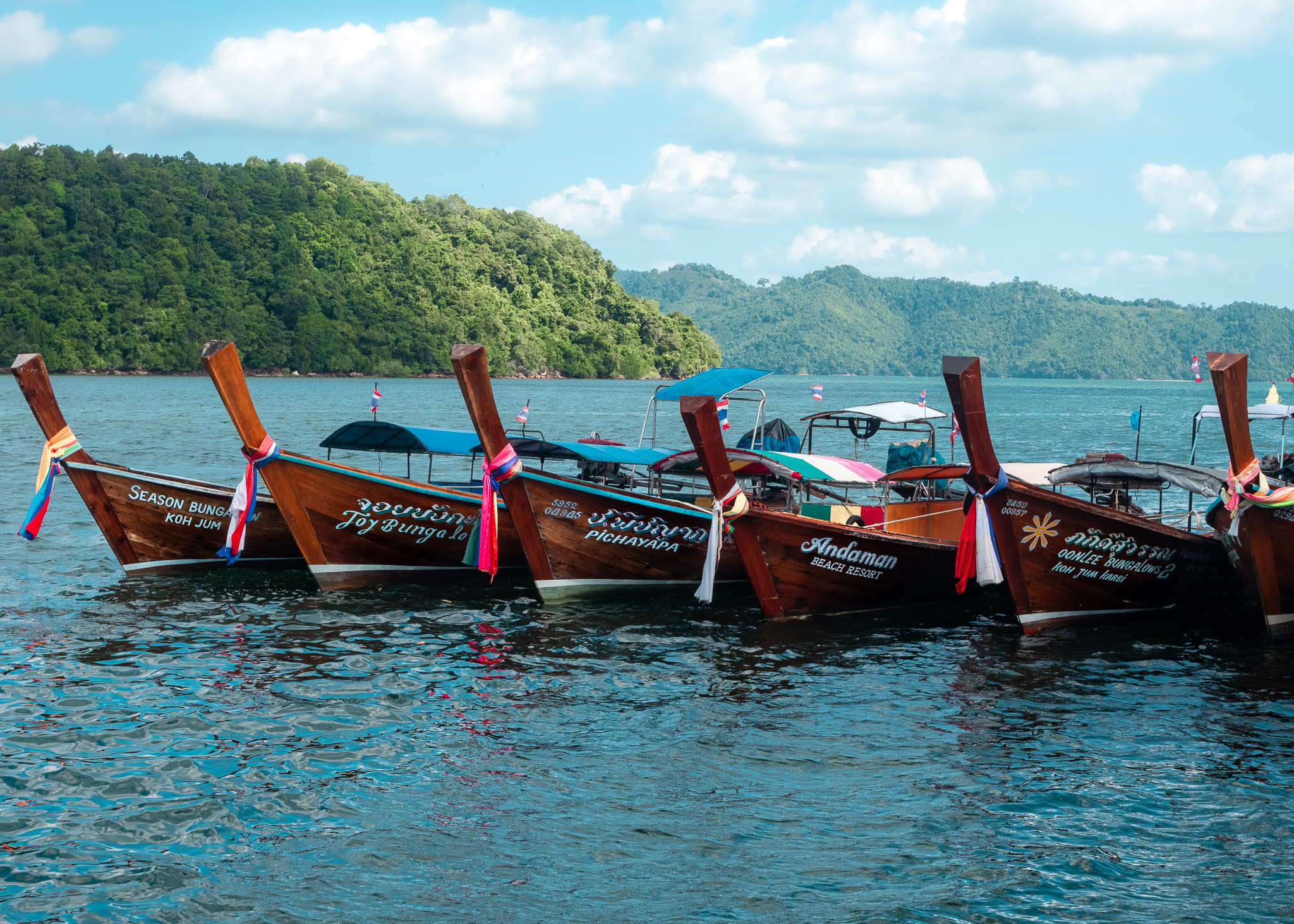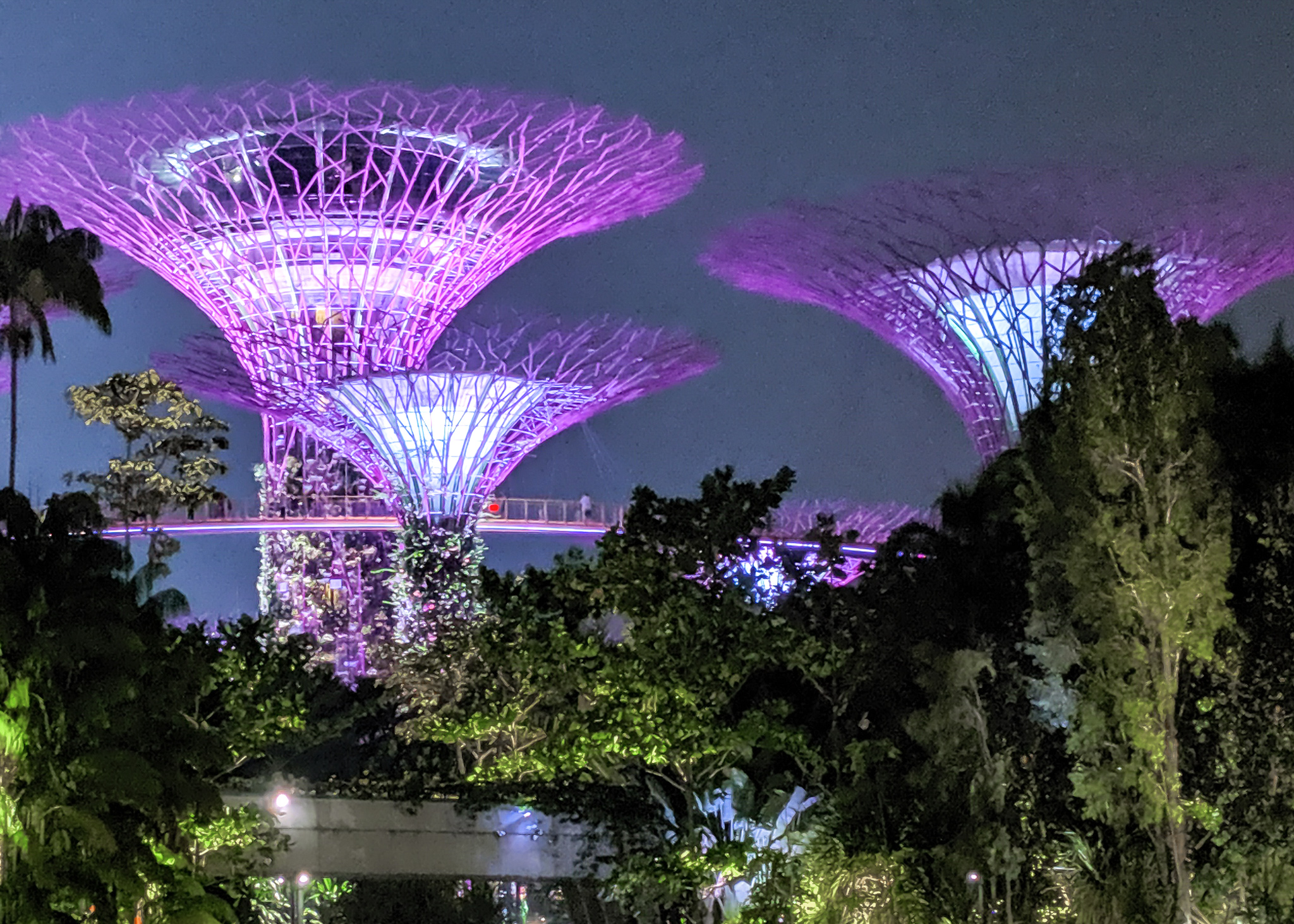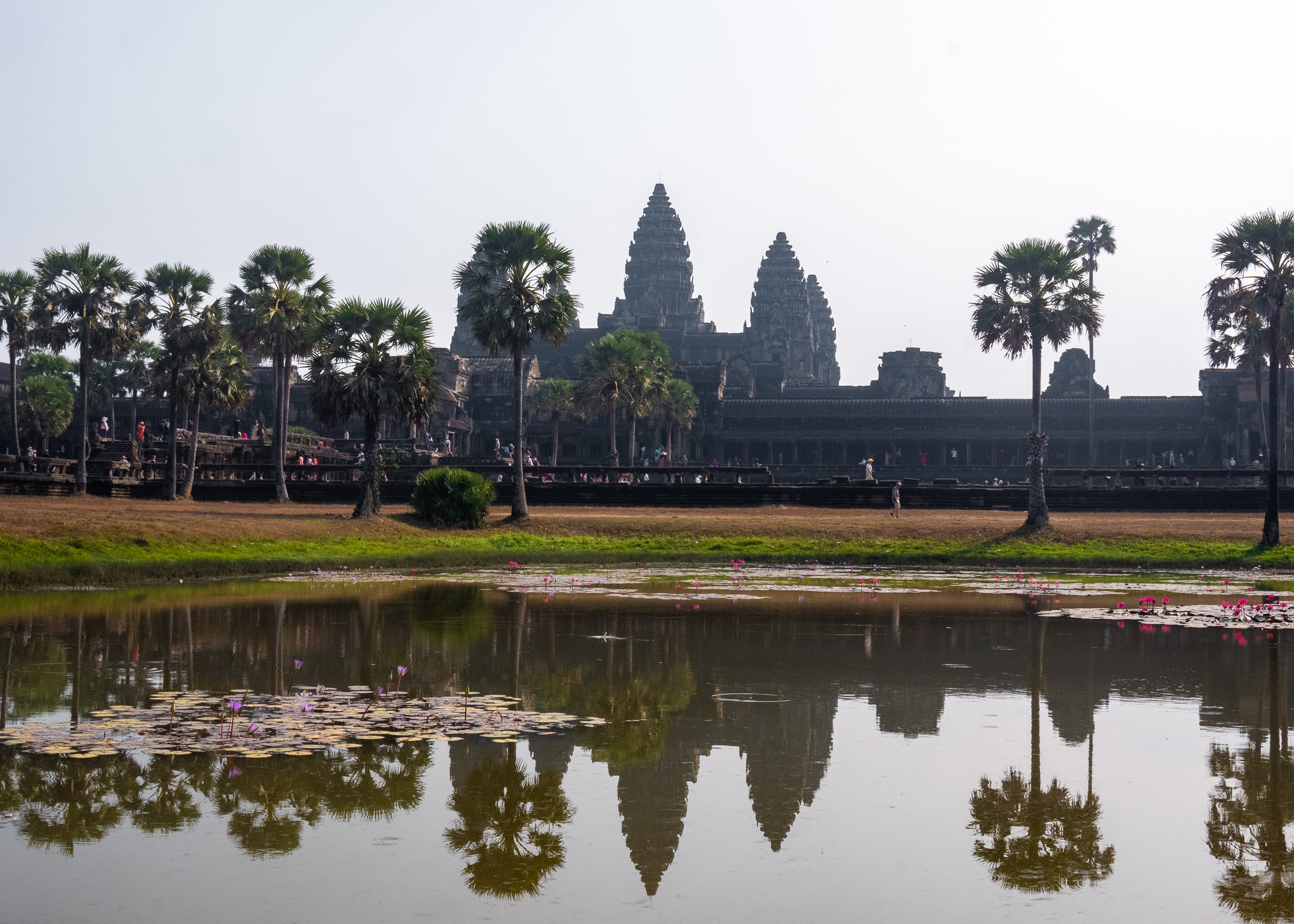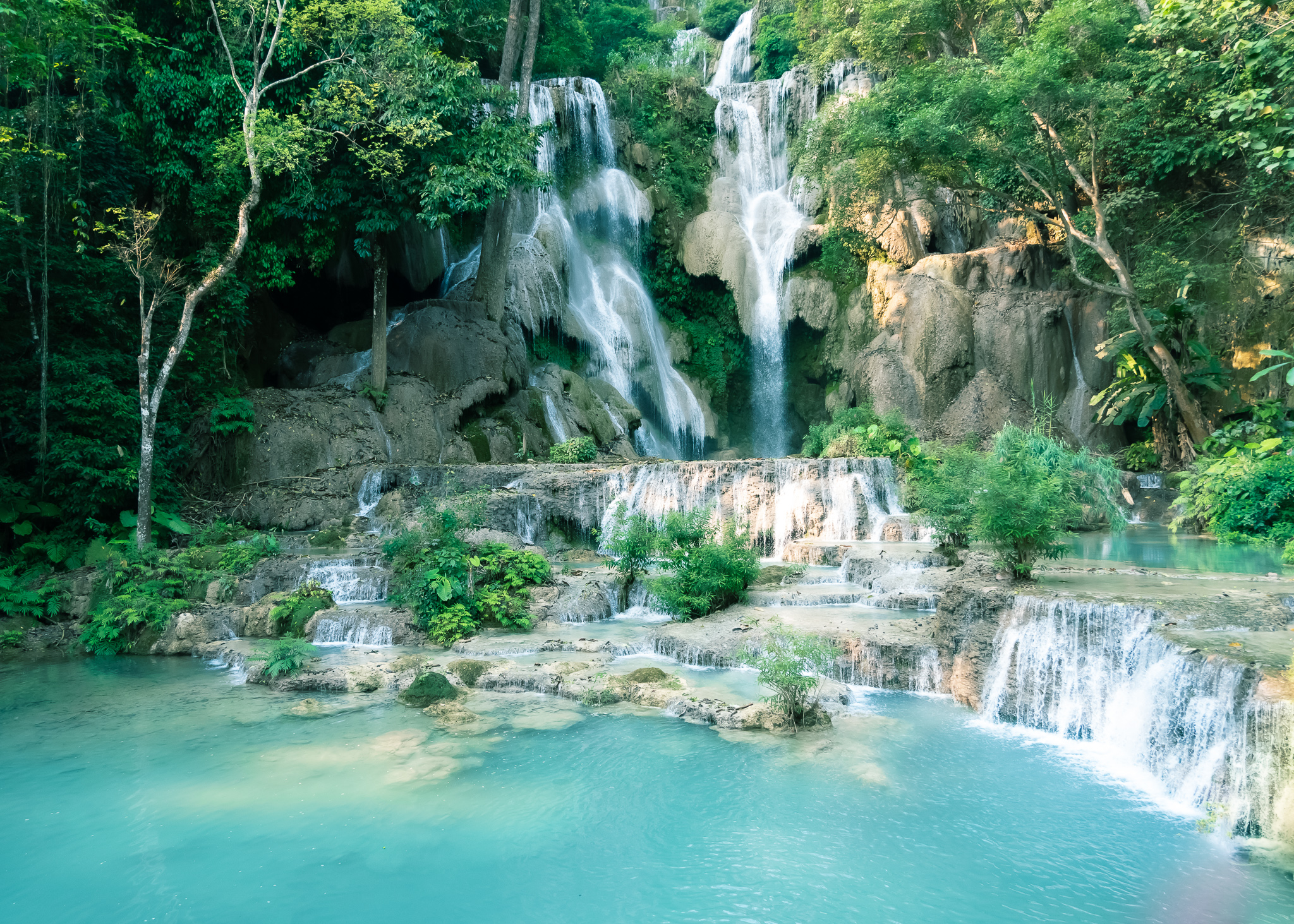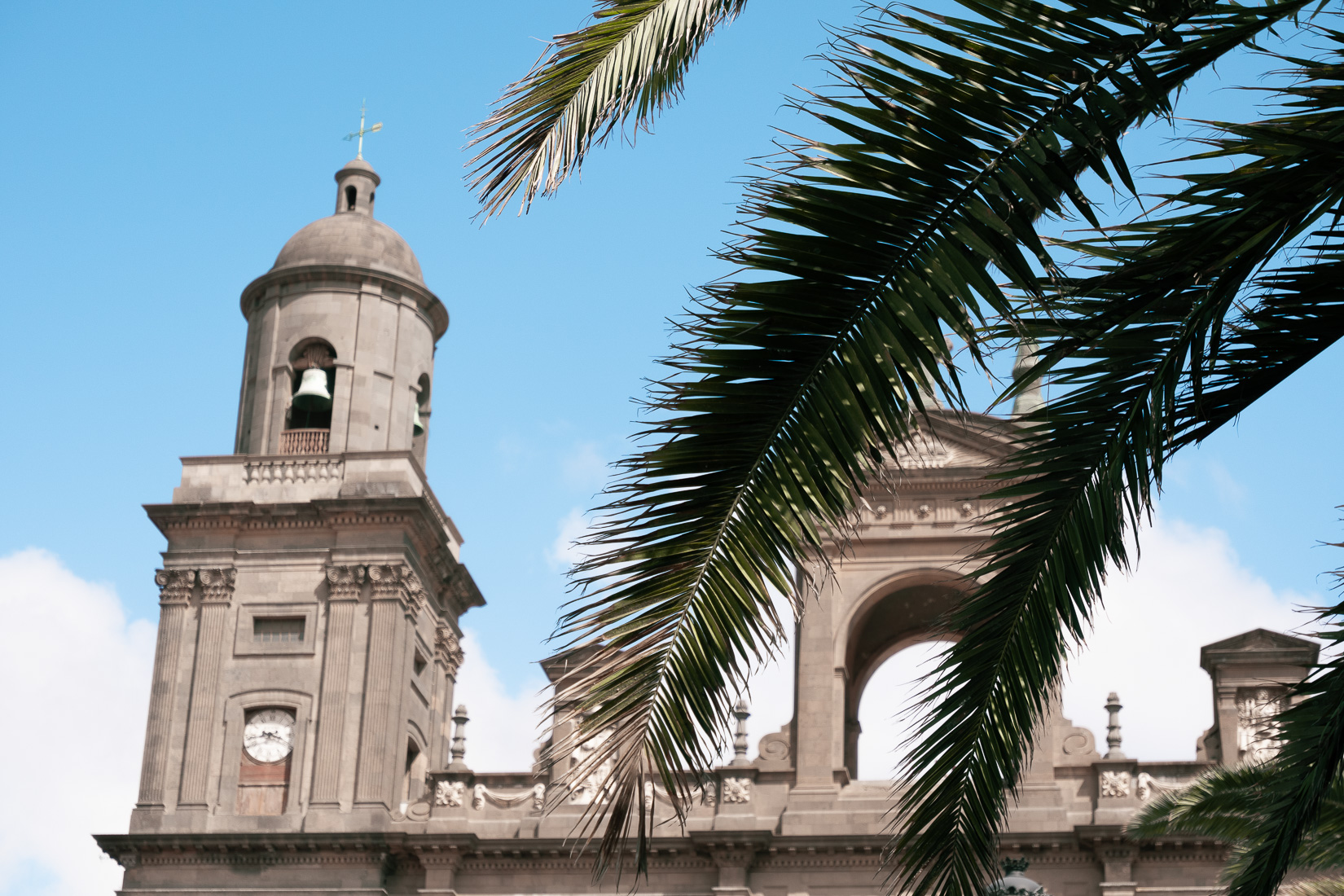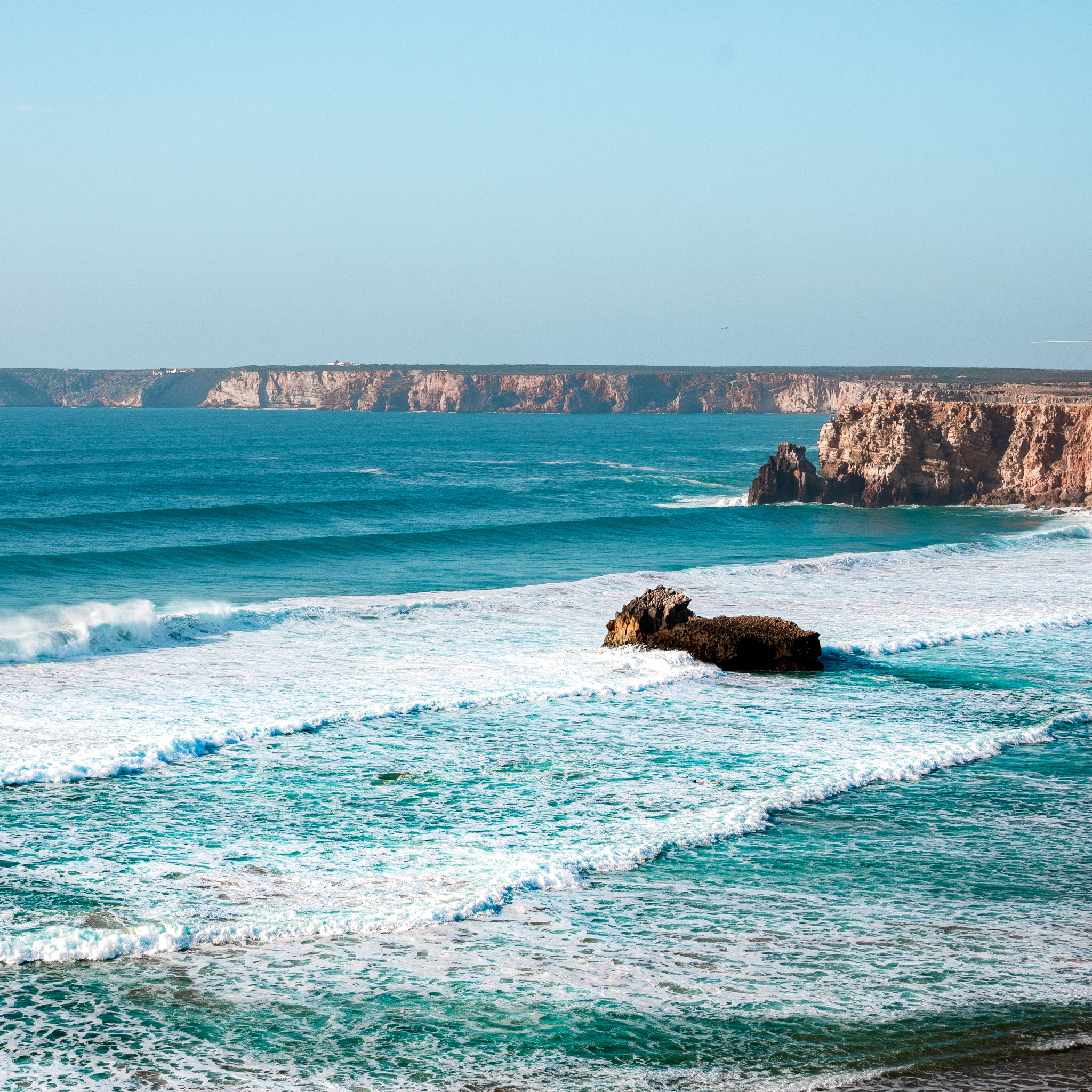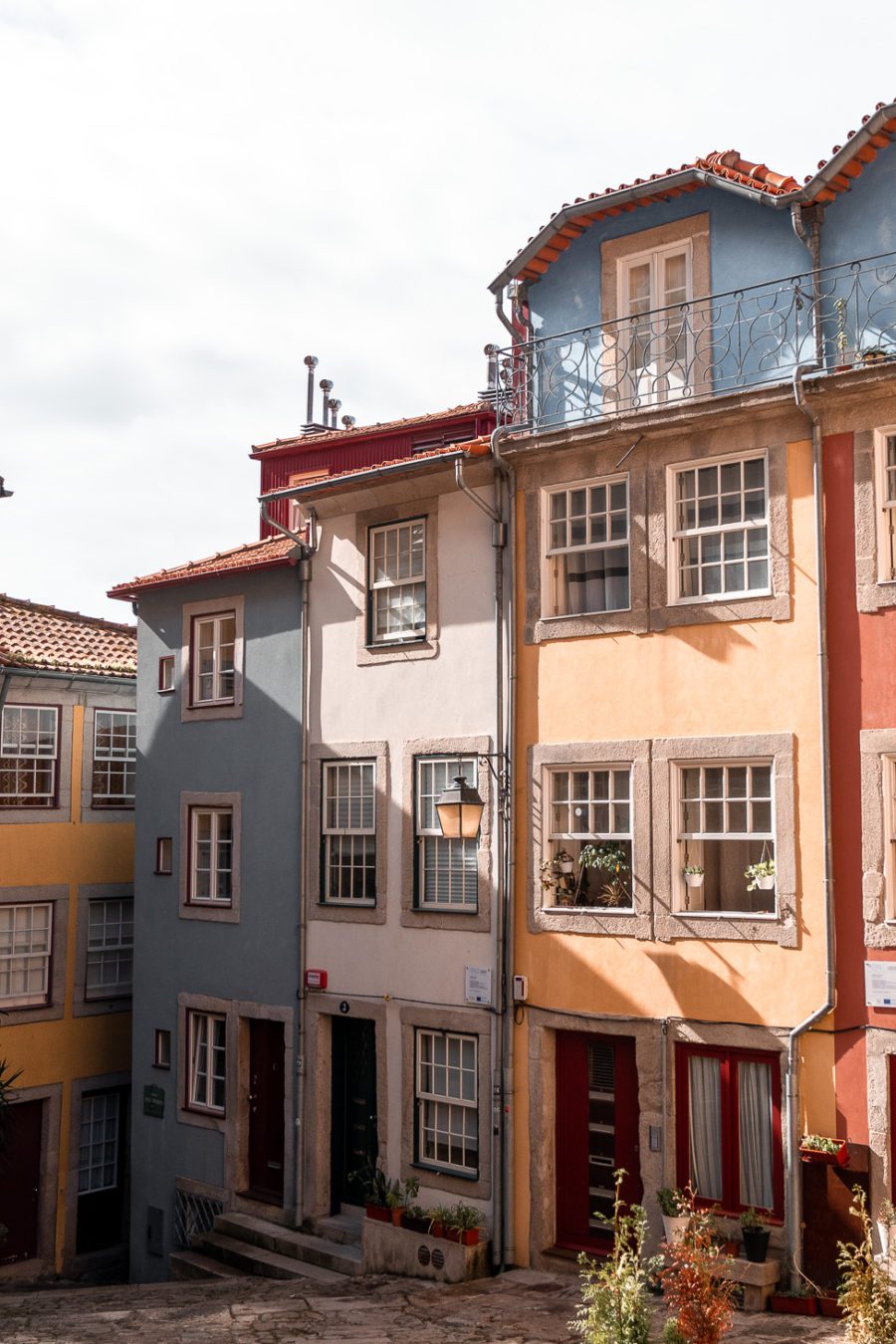A complete guide to Chiang Mai, Chiang Rai and Pai. The best of Northern Thailand.
If you want to explore the length and breadth of Thailand, you’ll quickly realise how your trip is broken down into three distinct phases; 1) Bangkok (because let’s face it, it’s one big bizarre and beautiful experience in itself), 2) tropical ‘island life’ in the paradisiacal South, and 3) adventures in the North, the undeniable cultural hub of Thailand.
With lush landscapes, glittering temples and some of the best street food in Southeast Asia, Chiang Mai, Chiang Rai and Pai in the north of Thailand simply cannot be missed. There’s so much to keep you busy, and the atmosphere is just incredible.
We headed to Chiang Mai from Bangkok via the ancient city of Ayutthaya, and we instantly fell in love. The low-rise historic centre was a breath of fresh air after the toxic capital. We immediately knew we had to spend as much time in the north as possible, but we were still a little unsure where to go and what our itinerary should look like.
We decided to put together this handy travel guide to help explorers like you experience the best of Northern Thailand and get the most out of your trip. Armed with this travel guide, you’ll have all the information you could possibly need to organise transport, accommodation, decide on things to do and places to see. Enjoy the adventure!
Chiang Mai
For us, Chiang Mai really does represent the best of Northern Thailand, and is the perfect hub from which to start your trip.
It’s the largest city in the north, and is filled to the brim with sparkling temples, quirky cafes, and boutique shops. Even though the outskirts of Chiang Mai feature all the frills of a modern city, with an airport, cinemas, shopping centres and superhighways, the historic centre really is one of Thailand’s cultural landmarks.
What we loved the most about Chiang Mai was how liveable it felt, and it seems that this is a feeling shared by the many expats and digital nomads who reside there. And who can blame them? Take a walk through the old town’s colourful, tree-lined streets and you’ll feel as enchanted as we did.
Although Chiang Mai certainly isn’t as ‘hippie’ as its northern neighbour, Pai, there’s an undeniably relaxed atmosphere here. Sure, grab a coffee, take a stroll around some temples, and perhaps treat yourself to a massage in one of the city’s many spas, but when you fancy something a bit more energetic, Chiang Mai won’t disappoint. With waterfalls, watersports and trekking, there’s something here to suit every traveller.
How to Get to Chiang Mai
By air
Chiang Mai has a very well-connected regional airport, and this is useful considering how far the city lies from Bangkok and the southern islands.
If you’re flying to Thailand from abroad, you’re likely to arrive at Bangkok’s international airport. From here you’ll be able to transfer to a short domestic flight to Chiang Mai.
From nearby countries like Laos, Vietnam or Cambodia, you should find reasonably priced direct flights to Chiang Mai.
If you’re travelling in the South of Thailand before you head north, the quickest and most convenient option (by a long shot) is to fly to Chiang Mai from Krabi, Trang or Phuket. From the Southern Airports, you’ll be able to find a range of cheap flights with budget carriers like AirAsia, Bangkok Airways or Nok Air to Chiang Mai. Note that many of these fly via Bangkok.
As always, we recommend using Skyscanner or Momondo to search for and book your flights.
Chiang Mai airport is a short 10-minute drive from the centre of Old Town. A Grab car costs around 160B (£4/€4.50/$5.10).
By train
A fun and potentially comfier way of travelling to Chiang Mai from Bangkok is to catch a train. The journey takes upwards of 11 hours, and night trains take a little longer.
Train tickets, particularly tickets for trains that run overnight, need to be booked well in advance in Thailand, otherwise there won’t be many seats available. Pay special attention to the class of ticket you buy, and check whether there is air conditioning or just a fan.
Night trains can be a really budget-friendly option for travellers, as they save you from buying a night in a hostel. Trying to sleep in a bunk bed while the train rumbles along the tracks can actually be a really fun experience, and it’s on many backpackers’ bucket lists for Thailand.
By bus
For budget travellers heading to Chiang Mai from Bangkok, another cheap option is to travel by bus. The journey will take around 10 hours, so you might decide it’s best to travel through the night.
From Phuket or Krabi in the south of Thailand, a direct bus to Chiang Mai will take a considerable amount of time – we’re talking 24 hours. Decide for yourself if you can manage that! We chickened out and ended up on a flight… sorry budget (and environment).
Chiang Mai Highlights
- Spend time at Doi Suthep National Park. To the northwest of Chiang Mai lies Doi Suthep, a mountainous national park that’s home to one of Thailand’s most loved temples; the golden masterpiece that is Wat Phra That Doi Suthep. Other places of interest in the park include Wat Pha Lat and the Monk’s Trail, the royal holiday home Bhubing Palace and the Monthathan Waterfall. Either hire a bike or flag down one of the many red Songthaews (shared taxis) from town ‒ the fare is 40฿ (£1/€1.15/$1.30) per person.
- Admire Chiang Mai’s many temples. It won’t take you long to realise that Chiang Mai is full of temples. Literally, there seems to be at least three along each road. And the thing is, they’re all stunning. Our favourites were Wat Lok Moli and Wat Chiang Man, although these were quite small in comparison to others. Your best bet is to do some research and plan your own walking tour of the temples, or just wander around and explore the ones that take your fancy!
- Get a Thai massage! Yes, you might be on holiday, but we all know that exploring cities is hard work. It’s certainly tough on those muscles! We suggest you get a dose of well-deserved TLC and book a massage at one of Chiang Mai’s many spas. Prices range from 150฿ (£3.80/€4.25/$4.80) for an hour, but you can enjoy a luxury experience at some of the more expensive spas.
- Splash around at the Grand Canyon Water Park. What better way to spend a sunny afternoon than fooling around on an inflatable assault course in an old flooded quarry? Entry is a little pricey for a budget traveller ‒ 650฿ (£16.50/€18.50/$21) ‒ and bear in mind that you can’t take your own food and drinks into the area. But, if you’re desperate to unleash your inner child and tackle the water park, then the expense will be well worth it.
- Visit the Bua Tong Waterfalls, also known as the Sticky Waterfalls! No, we didn’t believe it either, and unfortunately we didn’t have time to visit and check that this place was real. However, we have been assured that it is. Due to many years of mineral deposits building up on these rocks, believe it or not, it’s actually possible to walk up or down the height of the falls. Located 60km away from Chiang Mai, the drive can take around one hour and a half, but the experience is sure to be worthwhile.
- Take a cooking class! Taking a cooking class is a surefire way to get to grips with Thailand’s vibrant cuisine. There are some fantastic classes on offer in Chiang Mai, and you can either take your class out in the countryside using produce from a farm, or in the city where you’ll tour the local markets. We booked a class with Basil, and not only did we cook some incredible dishes with a teacher who was engaging, friendly and utterly hilarious, but we genuinely had the best evening ever. The class cost 1000฿ (£25/€28/$32) each which is pretty standard for a half-day course in the city.
Where to Stay in Chiang Mai
There are a plethora of incredible accommodation options both inside and outside of the centre of Chiang Mai. All hotels are bursting with character, and some offer fantastic facilities. We visited Chiang Mai on two separate occasions and stayed both times in superb budget hostels in the historic centre.
For solo travellers, we would recommend Common Hostel, where for as little as 410฿ (£10.40/€11.60/$13.10) you can snap up a single bed in a mixed or female-only dorm with a fabulous breakfast included. Double rooms with private bathrooms are also available. This isn’t the liveliest of hostels, but it’s calm, with a large communal area and a pool table.
As a couple on a budget, we thought Huen Chiang Man Hostel was excellent. We got a gorgeous, cosy room with a private bathroom and balcony for 650฿ (£16.50/€18.50/$21). This stylish little boutique hostel is really central, and a short walk away from the pick-up point for Doi Suthep.
How Long to Stay in Chiang Mai
We would recommend a minimum stay of four nights in Chiang Mai, although you might find yourself staying an extra night before you head to your next destination.
Chiang Mai Travel Tips
- The best way to get around Chiang Mai is the red shared taxis called songthaews. We thought they looked like old fashioned ambulance trucks! The fare is adjusted for how many people are in the taxi, so if there’s only a few of you then expect to pay more.
- There are A LOT of Traffic Police in and around Chiang Mai. If you’re thinking of hiring a motorbike and don’t have an international driving license, then expect to be stopped and fined.


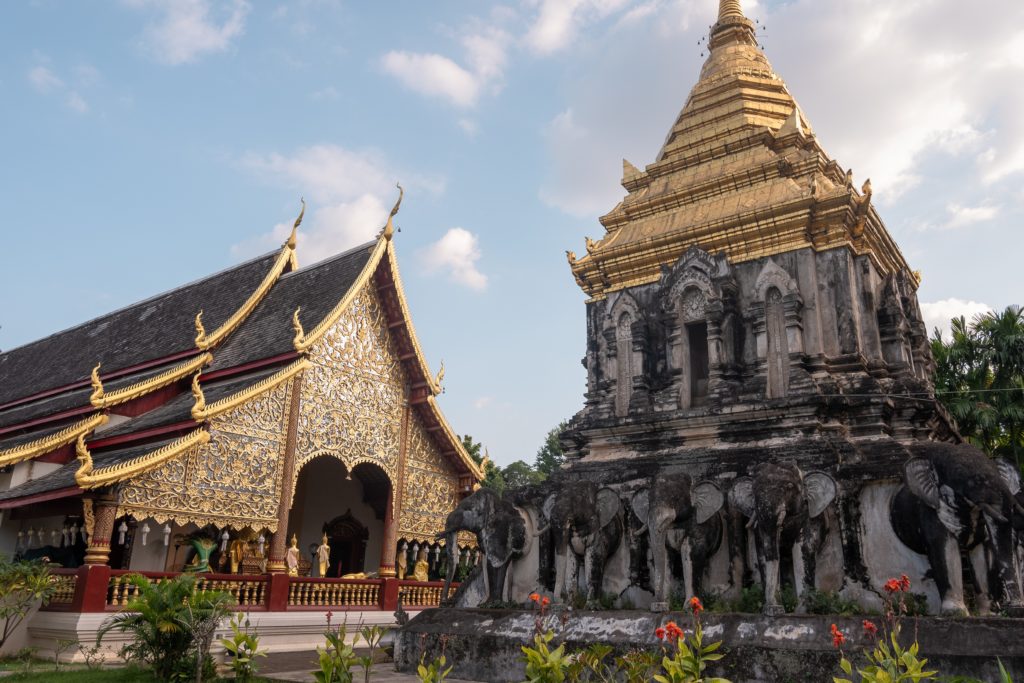
Chiang Rai
Chiang Rai is one of the northernmost towns in Thailand, and lies only a short drive from the borders of Myanmar and Laos. An exciting second stop on your Northern Thailand route, the city has a much more commercial feel to it than sleepy Chiang Mai, despite its smaller size.
This wasn’t our favourite stop on our trip; it’s just not as enchanting as Chiang Mai or Pai. Nevertheless, it still deserves its spot in this best of Northern Thailand travel guide because of its fascinating temples. They’re absolutely bonkers! They really are what make this breezy town worth visiting, even for just a few nights.
How to Get to Chiang Rai
From Chiang Mai, there are frequent busses that run the beautifully scenic route to Chiang Rai throughout the day. We travelled with Green Bus from Chiang Mai’s Bus Terminal 3, and the journey took around three hours costing just 220฿ (£5.50/€6.10/$7). This is a popular route amongst locals and tourists, so it’s worth looking out for cheap deals online. Chiang Rai also has a small regional airport.
Chiang Rai Highlights
- Marvel at Wat Rong Khun (the White Temple). This wondrous temple looks like Elsa’s ice palace taken right out of Disney’s Frozen! Rich with religious symbolism, the White Temple is magically unique and is an absolute must-see if you’re spending any amount of time in Chiang Rai. The temple lies a short 15km drive outside of town, and it’s possible to reach by public songthaew taxi. Watch out for up-to-date opening hours. Entrance costs 50฿ (£1.25/€1.40/$1.60).
- Visit Wat Rong Suea Ten (the Blue Temple). Just as mesmerising as the White Temple, Wat Rong Suea Ten, is intricate and mysterious with its bold blues, glittering golds and magnificent white Buddha statues. The Blue Temple is a five-minute ride outside of town and admission is free.
- Explore Baan Dam (the Black House). Baan Dam is a sort of museum/temple, and is odd to say the least. It’s a bizarre unification of stained black buildings filled with animal remains in various manifestations. It’s widely considered a representation of hell, while in contrast, the White Temple depicts heaven. Catch a public bus heading to Mai Sai, and hop off 13km outside of town.
- Visit the Mae Fah Luang Gardens, Royal Villa and Mae Fah Luang Arboretum. The Mae Fah Luang district in the hills of Doi Tung is best reached on motorbike, even though tours are available. The journey takes around 40 minutes, first on a long highway, and then up, up and away into the lofty reaches of Doi Tung. First you’ll reach the Royal Villa and magnificent landscaped gardens developed by the Princess Mother Srinagarindra, who played a pivotal role in helping the region escape the clutches of the opium trade. Further up the road heading towards the Myanmar border lies the arboretum. Entry to a single attraction costs 90฿ (£2.25/€2.50/$2.85), or buy a combined ticket to all three for 220฿ (£5.50/€6.10/$7).
Where to Stay in Chiang Rai
There are quite a few accommodation options dotted around Chiang Rai, ranging from budget backpacker to luxury stays. We stayed at Spinomad in the centre of town, and we couldn’t recommend it enough. It cost us around 850฿ (£21/€24/$27) per night for a super-clean private double and shared bathroom. Other options, including dormitories, are available. There’s a very funky on-site laundrette, and with breakfast you get REAL coffee!
How Long to Stay in Chiang Rai
Stay two nights in Chaing Rai, and certainly no more than three. You’ll probably have a temple day and perhaps a day at Mae Fah Luang.
Chiang Rai Travel Tips
- If you’re on a budget like we were, or even if you just fancy joining the locals, then head to the Night Market in the centre of town for your evening meal. There are tons of food stalls to choose from, and everyone huddles together on yellow plastic tables over beers and hot pot. It’s a great experience, and we didn’t eat anywhere else!
- It can be deceivingly cold in Chiang Rai, much like Pai. We noticed a marked difference as soon as we stepped off the bus! Bring an extra layer, for sure.
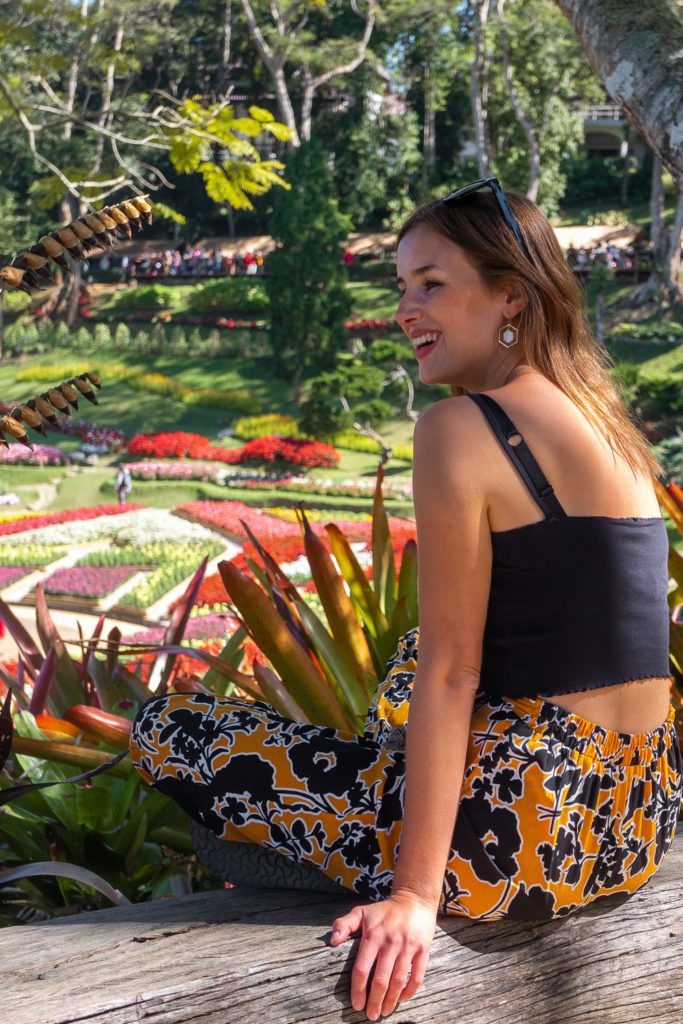


Pai
For many, atmospheric and heavenly Pai is the best of Northern Thailand. It’s Chiang Mai’s hippie cousin; a bohemian paradise of street food, yogis and artisan creatives.
Located up in the hills at the end of the long and winding road from Chiang Mai, this quiet riverside town has attracted backpackers and travellers for generations. Although these days the town has a reputation of being more of a caricature of its former self (with a few mass-produced hippie bracelets on sale in the market), there is still so much to love about this quirky town.
Pai sits amid breathtaking countryside, where you can spend your days roaming the hills and enjoying the fresh mountain air. Your evenings can then be spent exploring Pai’s twisting alleys and laid back yet vibey bar and street food scene.
Most travellers fall in love with Pai. If you’re looking for the best of Northern Thailand, here it is. Take it from us, this is somewhere you’ll have to tear yourself away from.
How to Get to Pai
There is currently no direct transportation between Chiang Rai and Pai, annoying as this is. Not to worry though, we travelled back to Chiang Mai and onwards to Pai in one day, and the journey was fine.
Getting from Chiang Mai to Pai is pretty easy. Most people choose to take a minibus up the winding road to the quaint northern town, but be warned ‒ those who are prone to car sickness might need a bag. It’s a popular fact that there are over 750 bends in the road!
Minibuses seem to be run by one company: Prem Pracha. The buses leave from Chiang Mai’s Arcade 2 bus station which is just out of town and opposite Bus Terminal 3, conveniently where the Chiang Rai bus comes in. We paid online in advance for our tickets, and they cost 200฿ (£5/€23.50/$26.80) each, although we’re sure you can buy them for cheaper at the bus station itself.
It’s also possible to organise a private transfer from your hotel in Chiang Mai, but you can expect this to cost a fair bit of money.
Pai Highlights
- Watch the sunset at Pai Canyon. Wow, this sure is a highlight. Put on your sturdiest trainers and scramble across the dusty pathways to find the perfect viewpoint. Entry is free.
- Cool off at Mo Paeng Waterfall. A scenic 20-minute ride from town, and costing 100฿ (£2.50/€2.75/$3.15) to enter, this waterfall offers a great opportunity to swim, slide and cool down. Even if you don’t end up paying to enter the falls, the journey is simply beautiful. A quieter alternative to this waterfall is PamBok, near the Bamboo Bridge.
- Relax at Tha Pai Hot Springs. Would you believe us if we say we were absolutely freezing in Pai in December? We moaned and groaned, and our families in the UK (which was actually cold) got so fed up with our complaints! We definitely should have visited the hot springs to warm up and stop our whining.
- Wander the rice paddies on the Bamboo Bridge. We made the mistake of visiting Pai in the dry season, but this place was serene and beautiful even then. Entry is 30฿ (£0.75/€0.85/$0.95) each, and you can walk for miles! There’s also a cute cafe over the rice paddies where you can enjoy a morning coffee.
- Hike up to the White Buddha (Wat Phra That Mae Yen). The White Buddha enjoys the best view across Pai, so don’t miss the opportunity to share it!
- Experience Pai’s Walking Street. With colourful shops brimming with interesting products, and a street food selection to rival the whole of Bangkok, you’ll find yourself at Pai’s atmospheric Walking Street every night.
Where to Stay in Pai
When deciding what accommodation to book for your stay in Pai, you need to choose between two main categories: the town centre or out in the countryside. We stayed in both!
There are loads of brilliant properties in the countryside surrounding Pai town, many with swimming pools and stunning views. Don’t worry if you’re a budget traveller; there are options to suit everyone. Bear in mind that you’ll need to arrange a taxi or hire a bike to visit the town centre for eating, drinking, shopping and socialising, but since all of Pai’s attractions are away from the centre anyway, arranging your own transport is a given. We stayed at a property called Ban Dalah, but unfortunately, we just didn’t rate it.
There are lots of great options in the town centre too, and you’ll be right near the action. We thoroughly recommend Hugga Pai, where we spent our final night in town. A double room, with what might have been the best damn shower in Southeast Asia, cost us 700฿ (£17.50/€19.50/$22), but there are dormitories available too.
How Long to Stay in Pai
Stay a minimum of three nights in Pai, and preferably more. You’ll probably find yourself booking to stay longer!
Pai Travel Tips
- Bring your poncho. Hah, okay not really, but the majority of shops really do sell beautiful brightly coloured ponchos that would work a treat in the colder months. Be sure to bring a few layers at least.
- The best way to get around Pai is by renting a scooter. In fact, this experience in itself is one of the best things about visiting Northern Thailand. There are a few rentals in town that offer lessons for beginners, so make sure you wise up before heading out on the road.
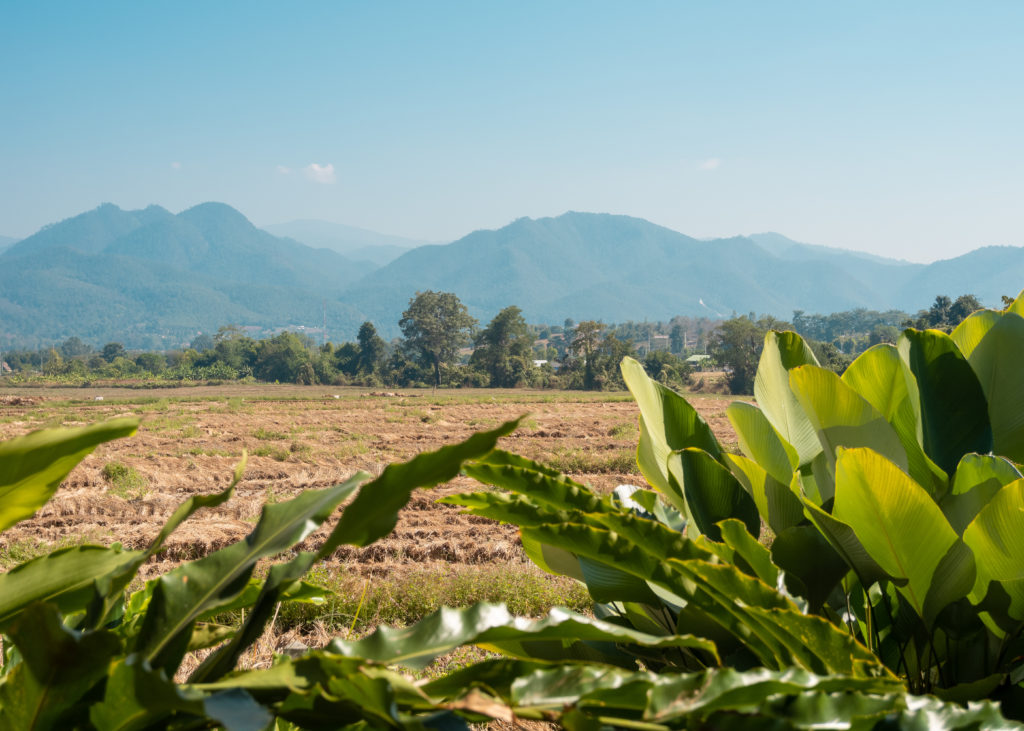

So there you have the best of Northern Thailand. Of course, your trip might extend further afield than these three main towns, and if so, please do tell us about your experiences below. Where is the best of Northern Thailand for you? We’d love to hear. Similarly, if you have any questions for us, pop them in the comments box below. Thanks for reading!
Like our content? Help support our work by buying us a coffee!
Discover Somewhere New
Hover over or click one of the pins to choose a country.

